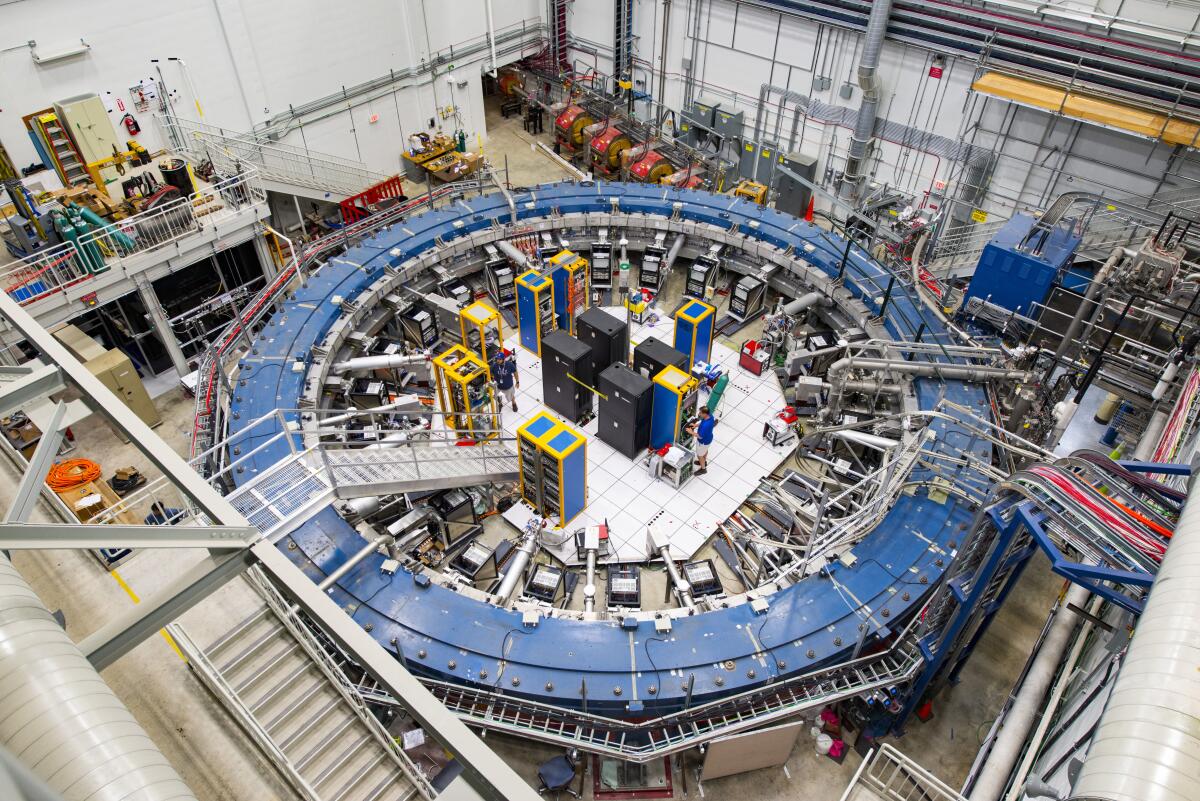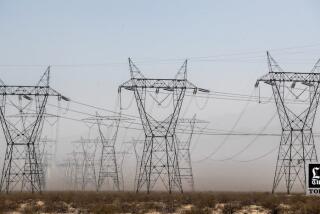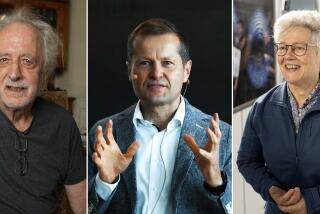âTantalizingâ results of two experiments defy physics rulebook

Preliminary results from two experiments suggest something could be wrong with the basic way physicists think the universe works â a prospect that has the field of particle physics both baffled and thrilled.
The tiniest particles arenât quite doing what is expected of them when spun around two different long-running experiments in the United States and Europe. The confounding results â if proven right â reveal major problems with the rulebook physicists use to describe and understand how the universe works at the subatomic level.
Theoretical physicist Matthew McCullough of CERN, the European Organization for Nuclear Research, said untangling the mysteries could âtake us beyond our current understanding of nature.â
The rulebook, called the Standard Model, was developed about 50 years ago. Experiments performed over decades affirmed over and over again that its descriptions of the particles and the forces that make up and govern the universe were pretty much on the mark. Until now.
âNew particles, new physics might be just beyond our research,â said Wayne State University particle physicist Alexey Petrov. âItâs tantalizing.â
UCLA professor Andrea Ghez and two other scientists are awarded the Nobel Prize in physics for their pioneering work on black holes.
The U.S. Energy Departmentâs Fermilab announced results Wednesday of 8.2 billion races along a track outside Chicago that, while ho-hum to most people, have physicists astir: The magnetic field around a fleeting subatomic particle is not what the Standard Model says it should be.
This follows new results published last month of an experiment at CERNâs Large Hadron Collider that found a surprising proportion of particles in the aftermath of high-speed collisions.
Petrov, who wasnât involved in either experiment, was initially skeptical of the Large Hadron Collider results when hints first emerged in 2014. With the latest, more comprehensive results, he said he is now âcautiously ecstatic.â
The point of the experiments, explains Johns Hopkins University theoretical physicist David Kaplan, is to pull apart particles and find out if thereâs âsomething funny going onâ with both the particles and the seemingly empty space between them.
âThe secrets donât just live in matter. They live in something that seems to fill in all of space and time. These are quantum fields,â Kaplan said. âWeâre putting energy into the vacuum and seeing what comes out.â
Both sets of results involve the strange, fleeting particle called the muon. Itâs the heavier cousin to the electrons that orbit an atomâs center.
But the muon is not part of the atom â it is unstable and normally exists for only two microseconds. After it was discovered in cosmic rays in 1936, it so confounded scientists that a famous physicist asked, âWho ordered that?â
âSince the very beginning it was making physicists scratch their heads,â said Graziano Venanzoni, an experimental physicist at an Italian national lab, who is one of the top scientists on the U.S. Fermilab experiment, called Muon g-2.
The experiment sends muons around a magnetized track that keeps the particles in existence long enough for researchers to get a closer look at them. Preliminary results suggest that the magnetic âspinâ of the muons is 0.1% off what the Standard Model predicts. That may not sound like much, but to particle physicists it is huge â more than enough to upend current understanding.
Researchers need another year or two to finish analyzing the results of all of the laps around the 50-foot track. If the results donât change, it will count as a major discovery, Venanzoni said.
Separately, at the worldâs largest atom smasher at CERN, physicists have been crashing protons against one another to see what happens afterward. One of the particle collidersâ several separate experiments measures what happens when particles called beauty or bottom quarks collide.
In the swirling heart of a distant galaxy, 55 million light-years from Earth, lies a supermassive black hole with a mass 6.5 billion times greater than that of our sun.
The Standard Model predicts that these beauty quark crashes should result in equal numbers of electrons and muons. Itâs sort of like flipping a coin 1,000 times and getting an about equal numbers of heads and tails, said Large Hadron Collider beauty experiment chief Chris Parkes.
But thatâs not what happened.
Researchers pored over the data from several years and a few thousand crashes and found a 15% difference, with significantly more electrons than muons, said experiment researcher Sheldon Stone of Syracuse University.
Neither experiment is being called an official discovery yet because there is still a tiny chance that the results are statistical quirks. Running the experiments more times â as is planned in both cases â could, in a year or two, satisfy the stringent statistical requirements for physics to hail it as a discovery, researchers said.
If the results do hold, they would upend âevery other calculation madeâ in the world of particle physics, Kaplan said.
âThis is not a fudge factor. This is something wrong,â Kaplan said.
He explained that there may be some kind of undiscovered particle â or force â that could explain both strange results.
Or these may be mistakes. In 2011, a baffling finding that a particle called a neutrino seemed to be traveling faster than light threatened the model, but it turned out to be the result of a loose electrical connection problem in the experiment.
âWe checked all our cable connections and weâve done what we can to check our data,â Stone said. âWeâre kind of confident, but you never know.â
Associated Press writer Jamey Keaten contributed to this report.







